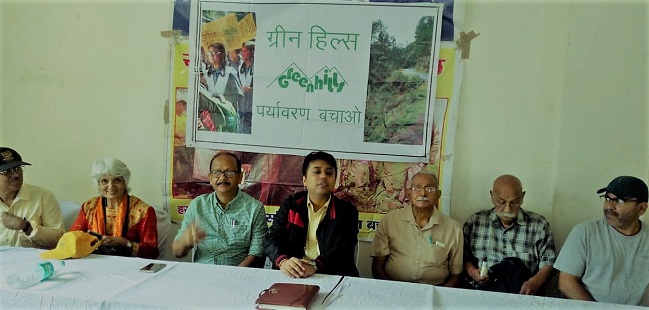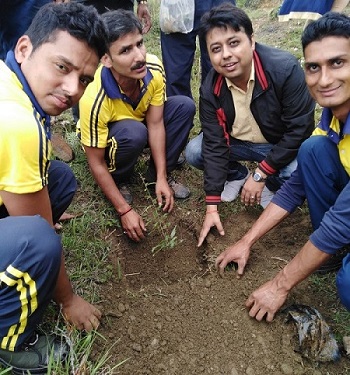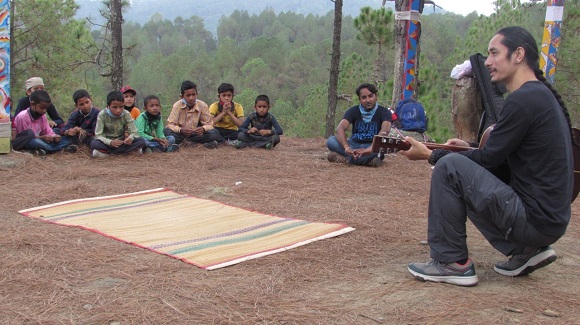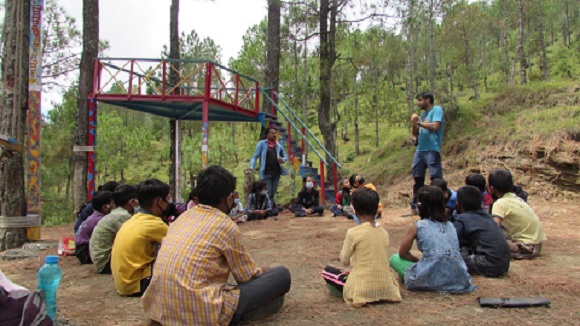
AFFORESTATION
In 2019, Green Hills embarked on a project entitled “Community Forests that mitigate climate change” funded by a travel company called Banyan Tours that organises treks in the region and the District’s Kosi Rejuvenation Fund. It was first implemented in the community forest in Maat village on the Kasar Devi ridge. Forest cover in Uttarakhand occupies 45.43% of the territory. However, in many areas, pine forests have replaced indigenous trees like Himalayan cedar and oak. The proliferation of pine is responsible for frequent forest fires that destroy leafy trees and emit substantial quantities of green house gas. Pine trees also deplete underground water because of which many mountain springs are now dry for major parts of the year. The village forest committee (van panchayat) gave Green Hills the green light to ‘forest scape’ an acre and a half of the area they control. We started by removing alien invasive species like lantana and eupatorium (kalabasa) to make way for grass that provides fodder to our dairy farmers. Trenches were dug perpendicular to the slope of the land to conserve water and pathways broadened to act as fire lines. Holes were dug and fertilised to receive the saplings provided by the Forest Department that students had nurtured since World Environment Day. About the time of Harela, a festival during which it is auspicious to plant trees, a function presided by the District Magistrate was organised during which more than 200 saplings were planted. These were later protected with tree guards and fences to prevent them being eaten by cows and goats. The survival rate of the saplings was, until recently, more than 90 per cent.Two years after the trees were planted, the tree guards have been stolen and the saplings devoured by goats.
 |
 |
|
|
|
We decided to pilot the creation of a dense indigenous forest using a Japanese method developed by Professor Miyawaki that ensures the rapid growth of trees. A bare patch of 200 square metres was chosen for this. The earth was dug to a depth of about two feet, the soil mixed with compost and bran. Companion trees were planted a metre apart. Thus, in every four square metres a canopy tree, a tree, a sub-tree and a bush was planted in holes that were fertilised with a fermented mixture of cow urine, dung, gram flour and jaggery that facilitates the rapid growth of trees. This preparation is known as ‘jeevamrit’ – the “nectar of life” oak leaves were used as mulch for this patch.
A small play area with a slide, swings and a look out platform was created to make village children feel attached to their forest. As schools were closed for months due to COVID, we organised a camp for the village children. Each day was animated by adults who were skilled in theatre, music, photography, yoga, origami, etc.
 |
 |
|
|
|
